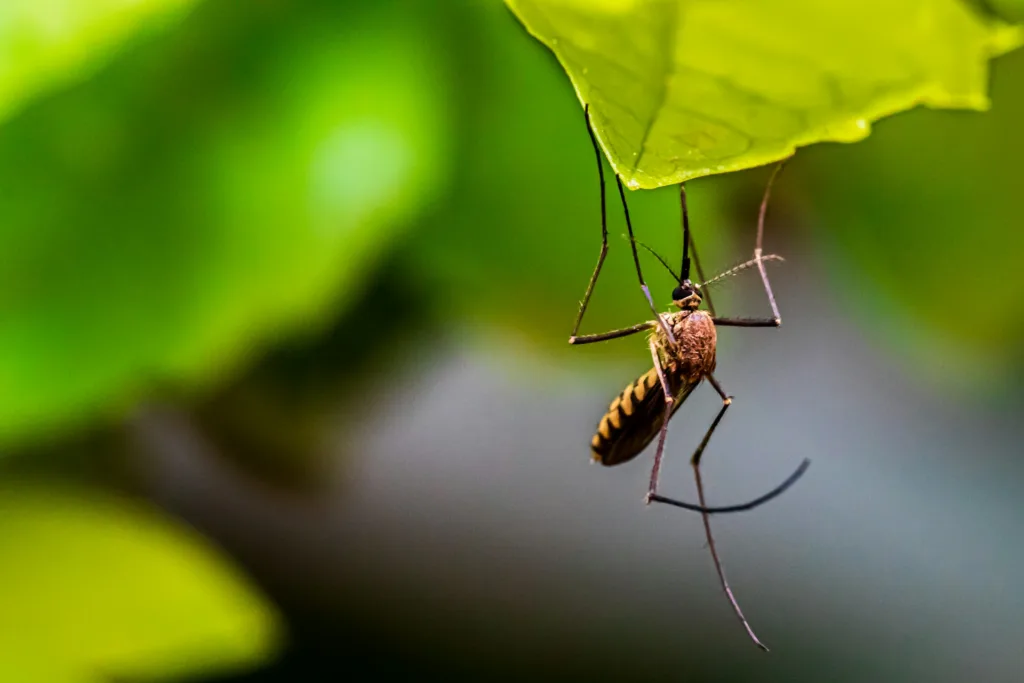Planning a trip to Kenya soon – but worried about malaria?
Being aware of the risks is essential for a safe and enjoyable trip. Malaria transmission occurs in almost all regions throughout Kenya, and understanding these risks is crucial for travelers.
Regions with High Malaria Risk in Kenya
While these areas in Kenya contain the highest risk, it’s vital to remember that nearly the entire country has a strong malaria risk.
Doctors and health experts urge travelers to exercise caution throughout the whole trip – at all times.
1. Coastal Areas
Coastal regions such as Mombasa, Malindi, and Lamu have a heightened risk of malaria transmission. The warm and humid climate provides optimal conditions for mosquito breeding, increasing the risk of malaria infection for travelers visiting these areas.
2. Western Kenya
Regions in Western Kenya, including Kisumu and Kakamega, are also prone to malaria transmission. Travelers exploring the stunning landscapes and wildlife in this area should take extra precautions to prevent mosquito bites.
3. Rural Areas
Rural regions across Kenya, especially those with dense vegetation and standing water, pose a significant malaria risk. These are the exact environments mosquitos are attracted to, in terms of population density of mosquitos.
Seasonal Malaria Risk
Understanding the seasonal variations in malaria risk is essential for travelers planning a trip to Kenya.
Rainy Seasons: Malaria transmission tends to increase during the rainy seasons, which typically occur from March to May and October to December. The abundance of stagnant water provides breeding grounds for mosquitoes, leading to a higher risk of malaria infection during these periods.
Dry Seasons: While malaria transmission may decrease during the dry seasons, travelers should remain vigilant and continue to take preventive measures throughout the year, as malaria can still occur in certain regions.
Preventive Measures for Travelers
Most Effective: Consult a Doctor for Preventive Malaria Tablets
Before traveling to malaria-prone areas in Kenya, obtaining a prescription for antimalarial medications is highly recommended.
Malarone (atovaquone-proguanil), doxycycline, and mefloquine are commonly prescribed antimalarial medications. It’s essential to consult with a healthcare professional to determine the most suitable option based on individual health factors and travel plans.
Get Anti-Malarials for Travel ➜
Being prepared with antimalarial medication (before entering a malaria-endemic region) is crucial for effective protection – due to antimalarials having strong effectiveness in preventing transmission.
Consult with a physician for personalized guidance on when to start, and how long to continue taking the medication.
Insect Bite Prevention
Basic measures to prevent mosquito bites are essential for reducing the risk of malaria infection:
- Use of Insect Repellent: Apply insect repellent containing DEET to exposed skin surfaces, particularly during dawn and dusk when mosquitoes are most active.
- Wearing Protective Clothing: Wear long-sleeved shirts, long pants, and closed-toe shoes to minimize exposed skin and prevent mosquito bites.
- Mosquito Nets: Sleep under insecticide-treated bed nets, especially in areas with a high risk of malaria transmission.
Time-of-Day Risk in Kenya
The risk of contracting malaria in Kenya peaks during dusk and dawn when mosquitoes are most active.
Travelers should exercise heightened caution during these times to minimize the chances of mosquito bites and potential malaria transmission.
Environmental Factors
Kenya’s diverse environment, characterized by lush vegetation and abundant water sources, provides ideal breeding grounds for mosquitoes. This includes:
- Lakes
- Rivers
- Marshes
Travelers should be aware of their surroundings, especially in densely vegetated areas like forests and jungles, where mosquitoes are prevalent.
If you’re wondering when to use your insect repellent and protective clothing, this is the time.
A Few More Considerations:
1. How likely am I to get malaria in Kenya?
WIth a proper protection strategy, your risk is relatively low – but it’s important to stay disciplined throughout your entire trip (especially with antimalarial medications).
One single mosquito bite likely won’t lead to transmission, but each one beyond that increases your chances – especially in Kenya.
3. Do I need to take malaria tablets if I’m only visiting urban areas in Kenya – such as Nairobi?
While urban areas may have a slightly-lower risk of malaria transmission, the risk remains strong throughout the entire country of Kenya. Mosquitos are still present in cities and densely-populated areas, even if water and vegetation isn’t nearby.
3. What are the side effects of antimalarial medications?
Malarone tends to have relatively-lower side effects, compared to others (such as doxycycline or mefloquine). Beyond minor stomach aches, nausea, and headaches for some individuals, malarone is very tolerable.
Other antimalarials can have worse side effects, such as vision changes, dizziness and disorientation – making it difficult to enjoy your travels.
4. Is Kenya well-equipped to treat individuals who contract malaria?
Yes, Kenya has established healthcare facilities and medical infrastructure capable of diagnosing and treating malaria effectively. Hospitals and clinics in urban areas and popular tourist destinations are equipped to handle malaria cases, ensuring travelers receive prompt medical attention if needed.

